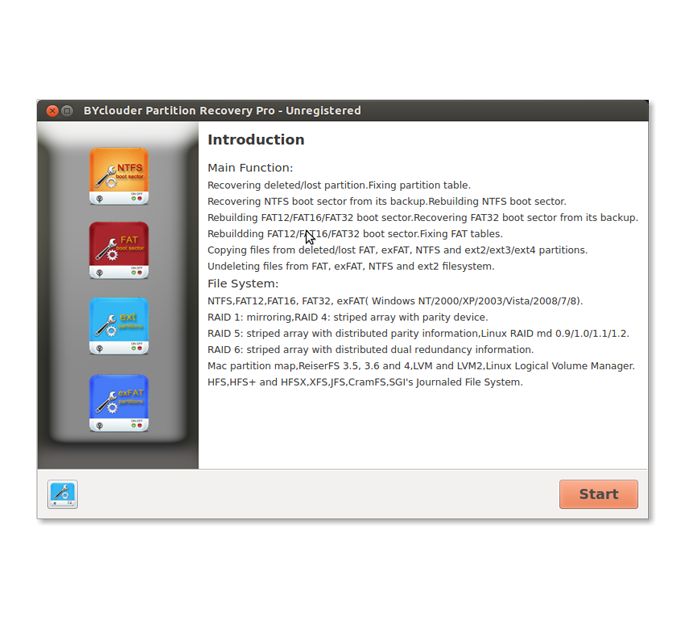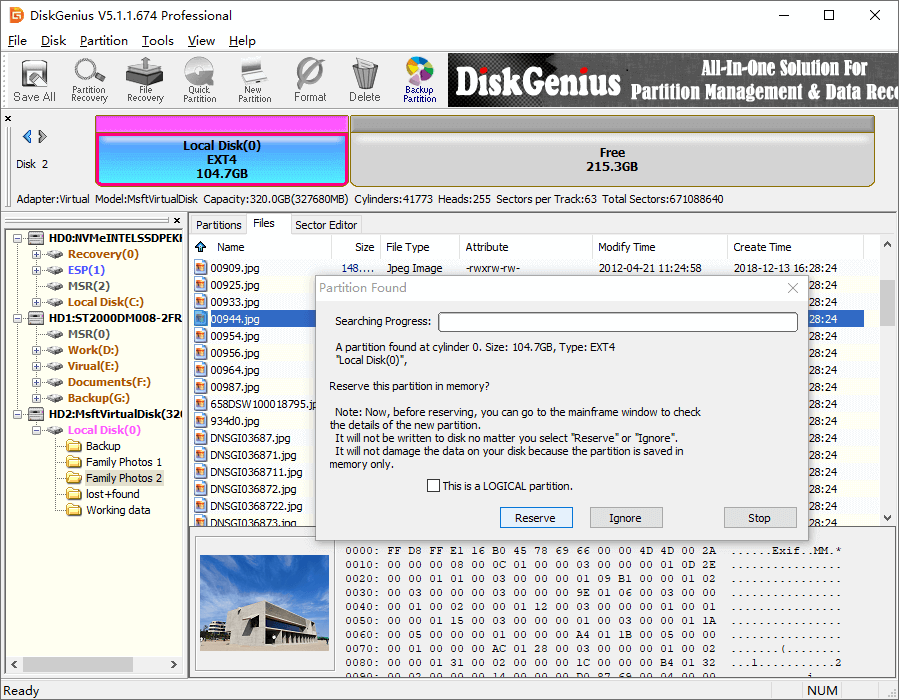

I was wondering if there is a qay to repair the old partitioning and get access to my files back?ĮDIT: I followed the instructions in the link sent me. I have done nothing else to write or change the drive. Now it sees it as a blank drive, even in UBUNTU. Me not thinking I initialized it as a GUID Partition table. Anyway it would recognize in BIOS but windows would not see it (because it was EXT3 or EXT4) so when I went into the disk manager it advised me the drive needed to be initialized. I did this by taking the drive from my windows PC and putting it in my UBUNTU PC, mounted it and copied the files over.Īfter the windows refresh I thought it would be easier to take the 2 TB drive and dock it in the external dock my Windows case has built in. I was re-imaging my windows box so I used that drive to back up some files to it. Recovers ntfs, refs, fat, exfat, hfs+, apfs, ext4, ext3, ext2. Choose the Device Attempt Data Rescue menu option. Active Partition Recovery restores deleted and fixes damaged partitions, volumes and disks. Should you ever do this again, do not reboot: as long as the partition is still in use, its position and size can be obtained from the kernel.I have a 2TB SATA drive that was being used as file storage on my UBUNTU computer. Choose the GParted Devices menu option and select the device with the lost partition. partitions within Windows, WinPE (recovery boot disk) and Linux (recovery LiveCD).


The partition's size / end point is not as important if the entire missing area belonged to one partition then just accept the maximum size. Restore accidentally deleted partitions, fix damaged volumes and disks. (Sometimes even going by trial-and-error and accepting fdisk's default offer will work - though again, if you get the "Wipe old signature?" question, do not accept it.) Testdisk can help you find where the partition starts (.if it knows what LUKS is), although in any case it won't be far from the end of the preceding partition and usually aligned to the megabyte. But if you do anyway, then again double-check that you're selecting a non-destructive option like "Unformatted".) (I don't recommend trying this with GParted or GNOME Disks. (Although if you get the prompt in the first place, that means you've found the right offset.) Fsck is an abbreviation for the File System Consistency check’.

So you should be able to just re-add the partition using fdisk or gdisk at the same starting point, just make sure to not accept fdisk's prompt to remove the old LUKS signature. In the Linux operating system, a powerful command exists, known as fsck’. Recovery of a FAT32 partition (instead of an NTFS partition) can be accomplished by following exactly the same steps. It's only when you create one that the partitioning tool will prompt to erase old data. This recovery example guides you through TestDisk, step by step, to recover these 'lost' partitions by: rewriting the corrupted NTFS boot sector, and recovering the accidentally deleted logical NTFS partition. Usually, when you delete a partition, its actual contents remain intact.


 0 kommentar(er)
0 kommentar(er)
